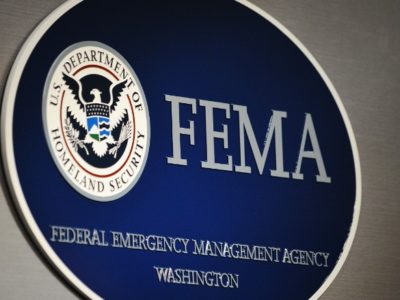The Ninth Circuit’s 10 Most Important Environmental Law Decisions of 2020
Climate Change, California v. Trump Cases Lead the List
 This is the second of three year-end posts on the most important environmental law decisions in 2020 from the U.S. Supreme Court, U.S. Court of Appeals for the Ninth Circuit and California Supreme Court. (The key U.S. Supreme Court rulings were the focus of yesterday’s post, and tomorrow’s will feature California Supreme Court decisions.)
This is the second of three year-end posts on the most important environmental law decisions in 2020 from the U.S. Supreme Court, U.S. Court of Appeals for the Ninth Circuit and California Supreme Court. (The key U.S. Supreme Court rulings were the focus of yesterday’s post, and tomorrow’s will feature California Supreme Court decisions.)
Today, the spotlight is on the Ninth Circuit. Selecting the top 10 most important environmental law decisions of 2020 from the Court of Appeals is an especially challenging task. That’s because this past year the Ninth Circuit continued its traditional, prodigious output of environmental and natural resource law cases, issuing approximately 40 published environmental decisions in 2020. Notably, this from a Court of Appeals that has become significantly more conservative in recent years: after a number of Trump-nominated circuit judges received U.S. Senate confirmation over the past four years, the Ninth Circuit is now pretty evenly-divided between judges nominated by Republican and Democratic presidents.
Without further ado, here’s my admittedly subjective list of the Ninth Circuit’s most important environmental decisions of 2020.
Juliana v. United States. Arguably, the Ninth Circuit’s most consequential environmental decision of the past year was its very first: Juliana v. United States, issued in January 2020. In Juliana, a coalition of children from across the U.S. filed a lawsuit against the federal government, claiming that the government’s failure to aggressively limit greenhouse gas emissions and their contribution to climate change violates the children’s due process- and public trust doctrine-based rights to a clean and safe environment. After the assigned district court judge denied the government’s motion to dismiss the case and set it for trial, the Trump Administration was ultimately successful in convincing the Ninth Circuit to entertain an interlocutory appeal. In its decision, the Ninth Circuit failed to address the merits of the young plaintiffs’ claims. Instead, a divided panel ruled that the plaintiffs lacked legal standing to bring the case. Specifically, and after finding that the children had demonstrated they’d suffered injury-in-fact attributable to the government’s inaction, the two-judge majority “reluctantly concluded” that the federal courts were incapable of adequately redressing the grievances alleged by the children, stating that those grievances must be left to Congress and the president. Judge Stanton, the third member of the panel, issued a lengthy and passionate dissent, concluding that the plaintiffs do have Article III standing and that the case should be allowed to proceed. She began her dissent by declaring, “the government bluntly insists that it has the absolute and unreviewable power to destroy the Nation,” a legal position she vehemently rejected.
Why is the Ninth Circuit’s Juliana decision so significant? First, both the majority and dissenting decisions fully accept–in graphic and unequivocal terms–plaintiffs’ arguments that climate change represents an existential threat to the plaintiff children and to future generations; and that the federal government has failed woefully to address the climate crisis. Indeed, both the majority and dissenting opinions in Juliana are more forceful on those points than any previously-reported federal appellate court decision; they will doubtless be cited frequently in future climate change cases by advocates and judges alike. Second, both opinions’ conclusion that the Juliana plaintiffs have satisfied the first two constitutional standing requirements–injury-in-fact and causation–conflicts with several earlier environmental standing rulings by federal courts (including those of the Ninth Circuit itself). So Juliana is a vitally important precedent on that issue as well.
Two postscripts to the Ninth Circuit’s January 2020 in Juliana: first, the plaintiffs immediately sought rehearing en banc in the case. Normally, such petitions are acte d upon by the Court of Appeals within a month or two. But the Juliana petition for rehearing has now been pending for nearly a year, which is quite unusual. Second, Juliana has sparked the filing of Juliana-inspired lawsuits around the country–another reason the Juliana case has proven to be so important.
Oakland v. BP PLC; County of San Mateo v. Chevron Corp. These two related decisions also involve climate change concerns and, indeed, represent the leading edge of another of the nation’s most important trends in climate change litigation. In the Oakland and San Mateo cases, a number of California local governments sued major coal, oil and gas companies in state court, alleging state common law theories to seek compensation for climate-change induced damage alleged to have been suffered by the local governments. Specifically, the local governments attribute that damage and resulting expense to the energy companies’ greenhouse gas emissions. The defendants immediately removed (i.e., transferred) these cases to federal court, in the belief that they have a better chance of prevailing in the latter forum. However, in both the Oakland and San Mateo decisions, the Ninth Circuit ruled that the energy defendants’ argument for removing the cases to federal court was meritless, and ordered the cases re-transferred back to California state court. This a major (if procedural) victory for the plaintiff local governments and, conversely, a substantial litigation setback for the Big Energy corporate defendants.
Two related postscripts: as with the Juliana litigation, the California local governments’ lawsuits in the Oakland and County of San Mateo cases have triggered comparable litigation filed by other local governments (and two states) in numerous cases filed across the U.S. The procedural pattern has been the same: the non-California cases have been filed in state courts, with the energy defendants quickly attempting to remove them to federal court. To date, numerous other U.S. Courts of Appeals have followed the Ninth Circuit’s lead and found companies’ removal theories to be without merit. However, the U.S. Supreme Court recently agreed to review one of them: the Fourth Circuit’s decision in Mayor and City of Baltimore v. BP PLC. So resolution of this key jurisdictional issue is far from settled.
Sierra Club v. Trump I/Sierra Club v. Trump II. This litigation, brought by the Sierra Club, challenges President Trump’s diversion of millions of dollars in Congressionally-appropriated funds contained in the 2019 Department of Defense Appropriations Act in order to finance Trump’s controversial border wall–a project Congress has declined to underwrite to the President’s satisfaction. The lawsuit contends that this diversion is invalid as violating both the terms of the congressional appropriations statute and constitutional separation-of-powers principles. In Sierra Club I, a Ninth Circuit panel held that the Sierra Club has Article III standing to bring this lawsuit (rejecting the Trump Administration’s arguments to the contrary) and upheld a district court preliminary injunction halting the Administration’s diversion of military funds for border wall construction. In Sierra Club II, the Ninth Circuit similarly found standing and upheld the district court’s issuance of a permanent injunction barring the challenged the Trump Administration’s diversion of appropriated Pentagon funds. (Update: the Supreme Court subsequently stayed the lower court injunctions in these cases and granted certiorari to consider the merits of the legality of the Trump funding diversion; the justices will hear arguments in and decide the litigation in 2021. Stay tuned.)
California v. Trump. In this companion case to the Sierra Club v. Trump litigation, the Court of Appeals similarly held that California and New Mexico have Article III standing to sue the Trump Administration under the Administrative Procedure Act, alleging that the Administration violated the DOD Appropriations Act by transferring military funds to finance Trump’s proposed border wall. The Ninth Circuit panel also affirmed the district court’s issuance of an injunction (parallel to that ordered in the related Sierra Club litigation) barring the transfer. (This injunction was also stayed by the Supreme Court, which–as in Sierra Club–has granted certiorari to review the Ninth Circuit decision in California v. Trump.
Crow Indian Tribe v. United States. In this case, the Ninth Circuit held that the U.S. Fish and Wildlife Service’s delisting of the Yellowstone grizzly bear population violated the federal Endangered Species Act. The panel decision concluded that the delisting violates the ESA’s directive to federal wildlife agencies to make listing decisions based solely on the best available scientific and commercial data–a mandate the USFWS failed to satisfy.
Environmental Protection Information Center v. Carlson. The EPIC case involves the urgent and contentious intersection of forest management policy and wildfires. The Ninth Circuit ruled that the U.S. Forest Service’s attempt to rely on a “categorical exclusion” to avoid environmental review of a commercial logging project in Northern California forest impacted by wildfire violated the National Environmental Policy Act. The Court of Appeals concluded that the Forest Service’s logging plan would have larger environmental impacts than are permitted under NEPA’s categorical exclusion process.
BARK v. U.S. Forest Service. The Forest Service fared equally poorly before the Ninth Circuit in another forest management/NEPA case. In BARK, the Court of Appeals concluded that the Forest Service’s determination that a forest thinning project had no significant environmental impacts requiring preparation of an environmental impact statement under NEPA was arbitrary and capricious. Among other perceived defects, the Ninth Circuit decision faulted the Forest Service for failing to identify and meaningfully analyze the cumulative environmental impacts of the proposed project.
National Family Farm Coalition v. U.S. Environmental Protection Agency I.. The Trump Administration has repeatedly been castigated by critics for both its diffident approach to regulation of toxic materials and its disinterest in following the mandates of the Administrative Procedure Act in its rulemaking proceedings. The National Family Farm Coalition case involves both. In its decision, the Ninth Circuit ruled that EPA’s registration of the weedkiller Enlist Duo in 34 states violates the Federal Insecticide Act by erroneously applying an unconditional standard for the product rather than a conditional standard. However, the Court of Appeals concluded that registration of the weedkiller did not violate the Endangered Species Act.
National Family Farm Coalition v. U.S. Environmental Protection Agency II.. It was a good year for the National Family Farm Coalition in the Ninth Circuit and, conversely, a bad one for EPA and its approach to regulation of hazardous materials. In National Family Farm Coalition II, the Court of Appeals rejected EPA’s regulatory decision to grant conditional registrations of dicamba-based herbicides for application on crops as violative of the Federal Insecticide, Fungicide and Rodenticide Act. The Ninth Circuit faulted EPA for failing to perform a proper analysis of the herbicide’s risks and resulting costs of using the product, as required under FIFRA.
Oakland Bulk & Oversized Terminal, LLC v. City of Oakland.. In this case, the City of Oakland contracted with a private company to build and operate a new commercial terminal at the Port of Oakland. When it became public knowledge that a principal purpose of the terminal was to transport and export domestically-produced coal to overseas markets, local residents and climate activists launched major protests, demanding that the city abandon the project. City official responded to the public controversy by attempting to back out of the agreement by imposing onerous permit conditions on the project. The private company in turn responded to Oakland’s change of heart by suing the city for breach of contract. The Ninth Circuit agreed that Oakland had breached its agreement. The court’s opinion faulted city officials for denying the company a terminal permit based on what it characterized as inaccurate health and safety determinations, major evidentiary gaps, erroneous assumptions and faulty analyses.
Tomorrow: the California Supreme Court’s most important environmental law decision of 2020.







Reader Comments